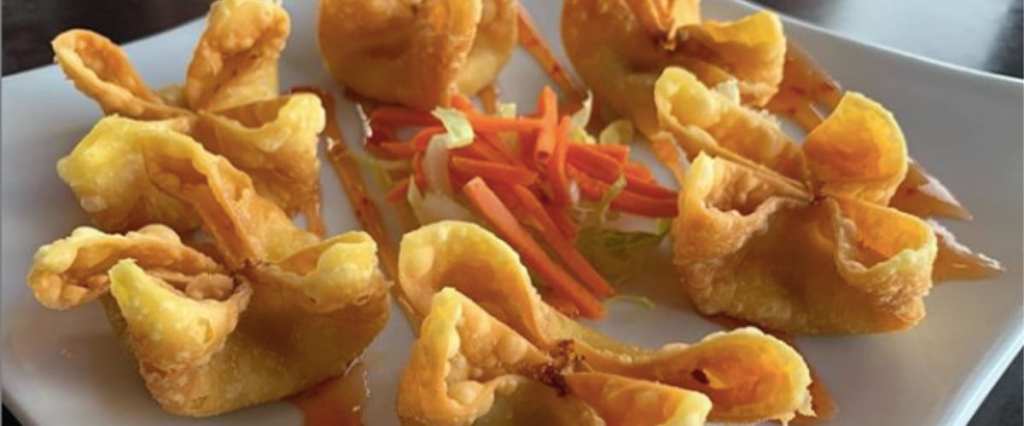Trending Now
If you’re a fan of Chinese food, you’re probably familiar with crab rangoon – and by familiar, I obviously mean you order at least a half a dozen of them with your meal knowing there will for sure not be a single one left.
So, we can all agree that the cheesy, crabby (maybe?), fried concoction is delicious…but what exactly is it, and where did it come from?
https://www.instagram.com/p/B1mxV-WBsvf/
Well, it’s actually a bit more of a story than you might have been expecting.
Here’s what you probably know – it’s basically deep-fried cheesecake with bits of fake crab, served as an appetizer in Chinese restaurants.
You might not know that even though American Chinese food isn’t, for the most part, what people traditionally eat in China, it was developed by Chinese-Americans as they emigrated to the States.
In the early 20th century, there were racially discriminatory laws on the books specifically meant to keep Chinese immigration to a minimum, but there was a loophole that allowed “merchant visas” at a higher rate. In 1915, a court ruled that restaurant owners qualified for these visas, and as a result the number of Chinese immigrants opening restaurants in the United States quadruped in under a decade.
https://www.instagram.com/p/B1teeAbH_Qn/
The owners set to work developing a distinct, new cuisine that would appeal to American palates. Some of the dishes, like kung pao chicken, were modified from traditional dishes, while others, like General Tso’s chicken, were created from the ground up.
Crab rangoon, though, actually has its roots in America’s obsession with “tiki culture” – a sort of racist conglomeration of what people assumed to be some kind of pan-Polynesian heritage. It was likely invented by Victor Bergeron, the owner and founder of Trader Vic’s, a chain of tiki bars that inspired the Trader Joe’s grocery chain.
He opened a saloon in 1934 and, intent on cashing in on the South Pacific obsessed public, integrated island decor along with food and beverages.
https://www.instagram.com/p/B1r4eNYFIvQ/
Fun fact: along with crab rangoon, he may also have invented the mai tai!
The menu was largely inspired by early American Chinese cuisine with a “tropical” twist, and in the 40s, Bergeron started experimenting with wonton wrappers, says his granddaughter Eve.
“Knowing my grandfather, he probably just started to play with it. Just put stuff in here, fry it up, see what we get.”
https://www.instagram.com/p/B1n4GW2pJNV/
Cream cheese was an American staple at the time, so it was a no-brainer, but Vic’s crab rangoon also featured real crab meat (Canadian blue crab), A1 steak sauce, Lingham’s Chili Sauce, and British sweet-and-hot sauce.
So it was markedly different from the sweet-ish version we’ve got today.
Its name, too, comes from tiki culture: Rangoon was the largest city in Burma (now Yangon in Myanmar). Other than that, though, nothing about the dish actually comes from the region. Crab rangoon is just a product of two things Americans loved – Chinese food and South Pacific life.
The vaguely Asian, sweet, deep-fried, cheese-stuffed goodness literally couldn’t miss – and it still can’t.
So, now you know where it comes from, what’s in it, and why you love it – and I don’t know about you, but I’m off to get some myself!






